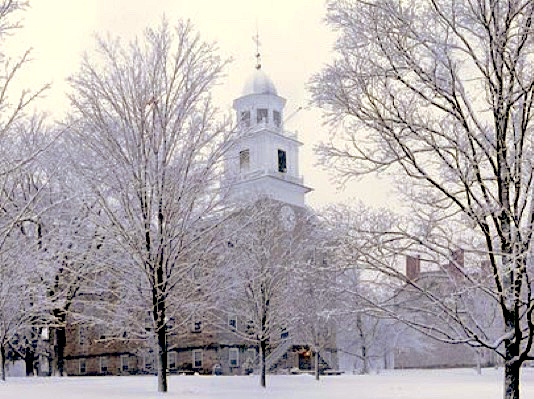President's Blog
On the Street for Winter Break (or Longer)

As college campuses across the country shut down for winter break, tens of thousands of students will soon find themselves homeless. Again.
Data is lacking to determine exactly how many college students will be homeless during the upcoming Winter Break, but some estimates put the number at over 30,000 annually.
Homelessness among college students is really two-fold. Some students experience partial homelessness when college facilities close while others are homeless throughout or for a part of the year.
The students who have nowhere to go when the college dorms close will be left to fend for themselves and survive through the break period until they can return to their dorm facilities in January.
Other students experience homelessness during the semester as well. They sleep in cars, in libraries or anywhere else they can. Some do not seek help because of the stigma attached to homelessness. Instead, they hide their homelessness in plain sight so they can blend in with the campus crowd. Close to 60,000 college students live this way each year.
Some of these students have already experience homelessness as minors. Their families might have lost their homes or split up. Their parents might have been incarcerated, for instance, and they somehow fell through the cracks of the child protective system. Some simply walked away from their housing situation because they did not feel that it could meet their needs.
Homelessness among college students sends a loud message of exclusion to young adults who are struggling to get an education so they can launch their life and participate in society.
In this regard, it is a paradoxical phenomenon since the very people who are preparing to support our society and ensure its future are actually rejected by it during the process.
Some of the issues lie within the system itself.
College students do not have to report that they are homeless. This makes it difficult to get an actual count at a time when experts and advocates strongly feel that the trend is up.
Additionally, these students often do not receive adequate financial assistance because they cannot provide sufficient information about their parents or guardians.
The recent Higher Education Act is helping in this area. It allows students to apply for federal aid without parental information or consent. It also makes it possible for financial aid administrators to designate students as independent if need be.
Helping students access the necessary funds to thrive during their study years is especially important these days since many families have lost economic ground and parents sometimes have to weigh between providing for younger children who still live at home and properly funding older children’s college costs (which extend far beyond just tuition).
Colleges are becoming more aware of the issue and are developing programs geared at assisting their homeless students.
UCLA’s Economic Crisis Response Team is among them. The program offers assistance through meal vouchers, scholarship counseling, and emergency financial assistance.
For UCLA students, this is just the right message from their own community. They are seeing that the system is aware of the hardship they are facing and reaching out to help them through these hard times as they prepare to graduate and build our society.

By Jean-Michel Giraud
President & CEO, Friendship Place
Huffington Post Blogger






